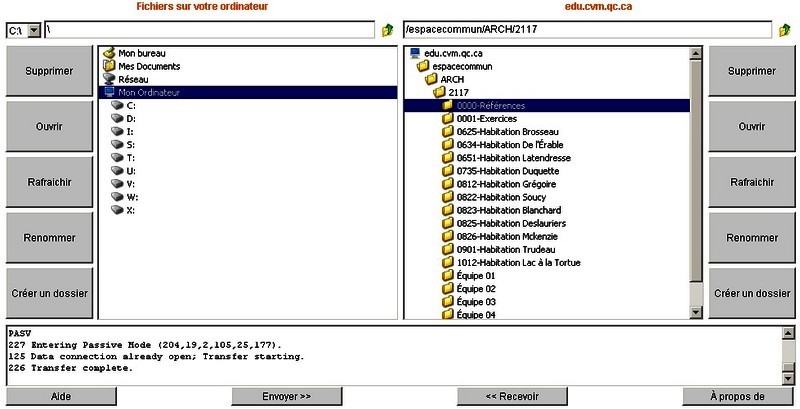Sharpening Problem-solving Skills for Architectural Practice
At Cégep du Vieux Montréal, Stéphane Gagné has used problem-based learning in his architectural studio classes with great success. A virtual common work space available on his school’s course management system has allowed him to reproduce the challenges of a real architectural practice.
Problem-based learning is a fixture in the majority of my studio classes. This approach plunges the student into a fictional work situation where they must deal with concrete and complex problems. These problems need to be resolved through discussions with colleagues in order to adopt appropriate strategies. The virtual office that I have created for these studios reproduces situations found in real architectural offices, which in my opinion, is the best way for students to learn about the profession that they have chosen.
Architectural Technology Training
Several courses in Architectural Technology adapt themselves well to problem-based learning. The second semester course which is an introduction to wood frame construction is among them. In this course, I encourage collaboration and team work. A virtual common workspace hosted on our Uranus server has proven to be particularly well-adapted to the context of the studio and the discussion that it engenders.
During various exercises, students must first do a needs analysis in order to produce preliminary drawings. These drawings are done on a computer using the online project dossier. Students develop their technical skills melding theory with the reality of a two-story single family residence.
This is where the problem-based approach comes to the fore. Having completed the initial phase of their training in wood frame construction, students are now presented with several technical difficulties which a real architectural technician might encounter.
A Working Environment with Problems Arising in Real Architectural Offices
The problems that are given to three or four student teams are taken from real situations and deal with different themes linked to the skills to be mastered in the course.

The server Uranus hosts different common workspaces, or virtual offices, accessible from the cegep’s computer labs.
In this manner, students will transpose their sketches onto the computer. They will also plan a staircase, create a 3D rendering, reduce the area of the residence to satisfy municipal bylaws and organize the structural system of the building.
Each task is generated through the project dossier which contains files on the server hosting the studio’s virtual common space. This computer network is not dissimilar to those found in professional offices and the project dossier is quite common in professional architectural offices as well.
Virtual Workshop Advantages
During the studio, students use the common space to create, modify and file project data always with the ultimate goal of satisfying client needs. The computer facilitates these tasks using a number of relevant programs. Word serves to create the minutes of team meetings. Excel figures in the calculation of habitable space and cost estimation. Autocad, of course, figures in the creation and modification of architectural drawings. Finally, Sketchup is used to produce three-dimensional building views.
The common space also enables easy access to individual student work and common project files alike. The professor can consult all the different files necessary for the course’s activities. Communication, team supervision and file updating are also easy tasks to accomplish. All the players on the team, teachers and students alike, can read and write in this space which is accessible through all the computers in the cegep. As well, documents can be retrieved at home, once the studio has ended using an FTP tool available on the college’s platform.

Accessing the common space using the college platform’s FTP
Evaluating Problem-based Learning
In my opinion, the virtual architectural office is one of the best ways of reproducing the demands and challenges of the workplace especially when combined with problem-based learning.
This collective work environment concretely and dynamically simulates reality where stress management and tenacity are critical. Admirably, students enthusiastically rise to the challenges that these situations present.
Problem-based learning has sharpened my students’ communication skills and their problem solving abilities while allowing me to evaluate them using varied and complex information. Finally, my students have learned to create their own solutions as part of a team which will stand them in good stead once they enter the workplace.
Please use the comments feature below to share your opinions with your colleagues.

